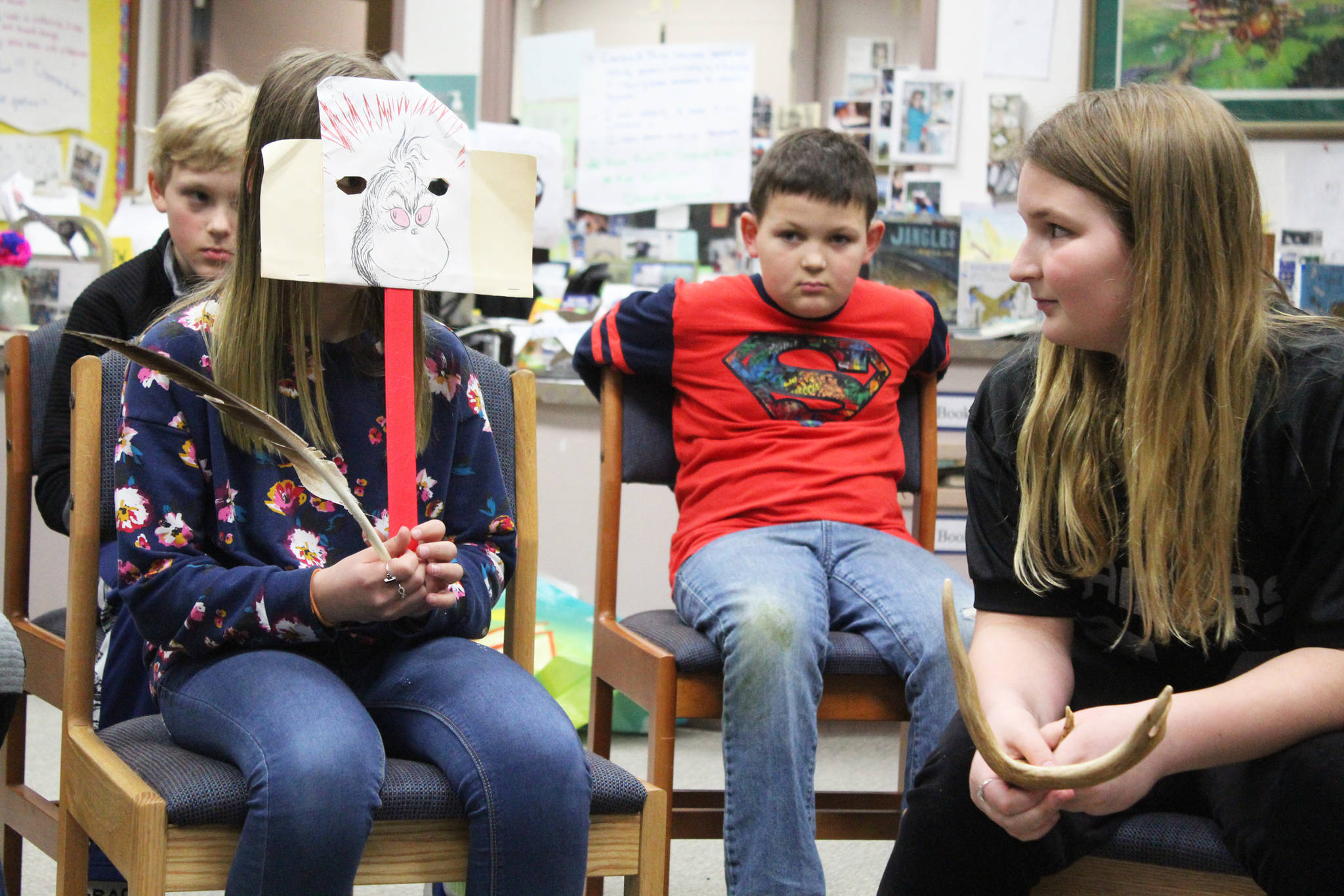Editor’s note: This story has been edited to add information and to clarify that Homer Flex School was the first in the district to use restorative justice. West Homer Elementary was the first to pair them with a youth court program.
“Restorative justice practices” is a mouthful, and might sound more complicated than it is to some. Fifth and sixth graders at West Homer Elementary School, however, know exactly what it is and won’t hesitate to tell you, now that they’ve gone through the Kenai Peninsula Youth Court Restorative Justice Practices program.
A group of new inductees in the program were celebrated in a swearing-in ceremony on March 27 at the Homer Courthouse. The Kenai Peninsula Youth Court is an ongoing program for students ages 12-18 that helps them learn about the criminal justice system by having them perform the roles of a courtroom, from the jurors to the judge.
The new aspect brought to the program this year is the restorative justice practices. West Homer Elementary teacher Becky Paul, the positive behavior support coordinator for the school, first learned about the concept from the school psychologist. She got a grant from the Homer Foundation to implement a restorative justice program at the school along with a career development grant from the Kenai Peninsula Borough School District.
Homer Flex School has been using restorative justice practices with its students for the last three years and was the first in the school district, according to Ingrid Harrald, the school’s counselor. West Homer’s program is the first Youth Court program in the state to implement restorative justice.
Restorative practices focus on more healing ways to solve discipline problems for students. It challenges them to focus more on their feelings, the reasons behind their actions and how those actions make other people feel.
“It just made so much sense to me,” Paul said of a restorative justice training she attended in the Lower 48. “So I brought it back to West Homer.”
The program was then tied in to the already existing Kenai Peninsula Youth Court, coordinated by Ginny Espenshade. During a demonstration for younger students on March 22, fifth and sixth graders sat in a circle in the school library, processing a discipline scenario by using the restorative practices they’ve been learning.
Each participating student had a role to play in the scenario, which was based off the story of “The Grinch Who Stole Christmas.” The younger students watched their older counterparts — playing the part of the Grinch, various Whos from Whoville and Max the dog — work through the Grinch’s offense of stealing Christmas to arrive at a solution that was healing for everyone involved.
By the end of the demonstration, the Grinch, played by Synnove Neese had thoroughly apologized and accepted responsibility. The other students, representing Max, the mayor of Whoville, and Cindy Lou Who, all felt they had a resolution they could be satisfied with that involved the Grinch making amends and reparations.
“We’ve always tried to insert restorative approach into our Kenai Peninsula Youth Court, but you can only go so far with the model of a court,” Espenshade said of officially integrating the two programs. “… So it’s a perfect fit. And I love the combination of peer support and restorative.”
Espenshade said each West Homer class going through the program has brought new ideas to the table.
“I think empathy is a big piece of that, teaching and building on kids’ innate sense of empathy,” she said of the program’s importance. “Problem solving, … social emotional development. … It just is, if it becomes part of their vocabulary? I mean, I haven’t heard kids this age say ‘empathy’ so often in my whole life, and I think they understand what it means, too.”
Paul said the program is more about changing hearts than it is strictly dealing with discipline issues.
“I think it makes a healthier community,” she said. “We had two of our students tell us a story about their (being) among some friends. And they had a situation on the playground, since they’ve started in Youth Court … where they were able to help solve a conflict by using their restorative questions and bringing to a peaceful conclusion.”
The students themselves are excited to be part of something that’s never been done in their school before.
Neese said it’s been fun to see how one could potentially change aspects of the court system, how to do things a little differently to get better outcomes. Gracie Miotke said she’s learned how to be a better listener. Rainey Sundheim, who served as the circle keeper (or moderator) during the Grinch demonstration, latched on to the idea of the word “restorative.” She said she thinks the point is to restore people back to the best version of themselves that they can be.
Sara Noller said she sees how the practices they’ve learned can be applied to solving problems among friends. She also said it’s a good feeling to share one’s experience with others through the circles.
Once in sixth grade, the students are able to graduate the program. During the Youth Court swearing-in event at the courthouse, several students were recognized for their roles throughout the process, from being good at working in the restorative circles to earning top scores on the bar exam tests they take.
Reach Megan Pacer at mpacer@homernews.com.


